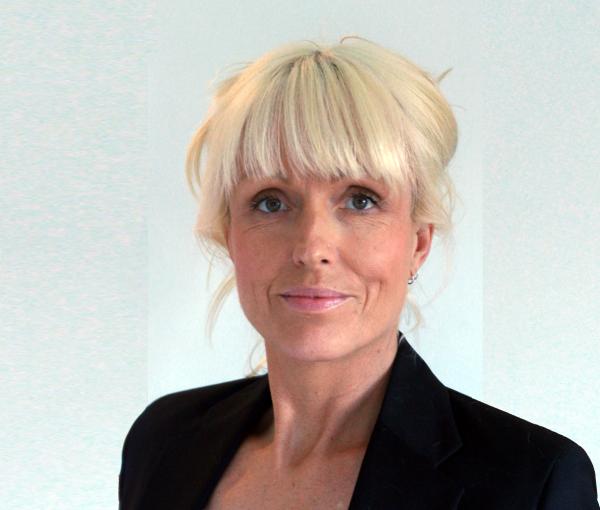Linda Sjåfjell has written her PhD thesis on domestic violence against women. She has interviewed nine women who have been victims of domestic violence themselves and studied the language used about domestic violence in official documents from a period of thirty years.
“I have always been preoccupied with injustice. To commit violence against another human being is deeply offensive to the injured party. How can we understand violence, particularly violence in a love relationship? This is what I wanted to explore,” says Sjåfjell.
“Moreover, I was curious of the fact that the terms we use when we speak about the phenomenon has changed over time. What do these linguistic changes signify and why have they occurred? What happened to the term abuse of women, for instance?”
The victim’s stories
The women interviewed by Sjåfjell were recruited through women’s shelters in primarily two Norwegian counties.
“The women’s shelters selected women whom they thought had sufficient distance to their own story and could thereby better cope with the interview,” she says.
“They primarily used everyday language when they spoke about their experiences of violence. And they clearly distinguished between various types of violence.”
Sjåfjell is referring to a classification into the four categories physical violence, sexual violence, material violence and psychological violence.
”The language that the women used reflected the public discourse on domestic violence and the women’s shelters’ professional language,” she says.

”The women showed through the interviews that they were familiar with how domestic violence is divided into categories, and they used these categories actively in order to distinguish between the various types of violence they had experienced.”
Sjåfjell was surprised to hear about the large extent of sexual violence that the women had experienced.
“They didn’t use the term rape themselves. Some said, ‘There are only so many times you can say no’. They called it sexual harassment or said that ‘he forced himself upon me’. But when I asked them directly: ‘Were you raped?’ they answered me ‘yes’,” she says.
“I think the women resist using the word rape because it doesn’t belong in a relationship. They associated rape with being assaulted outside of their home, by a stranger.”
The women also talked about material or financial violence, of having no rights or access to their finances.
”The women had to ask their husbands for basic things such as food or hygiene products. If the husband didn’t think the things they asked for were necessary, they weren’t given any money,” says Sjåfjell.
Another, additional burden for the women is so-called latent violence. Latent violence refers to violence as a constant underlying possibility, and that the women had to walk on eggshells in order to avoid provoking the violence to enter the surface.”
”For instance, one woman explained that she could hear what mood her husband was in from the sound of the gravel outside when he parked the car. In this way she could sense whether he would be violent or not when he came home.”
The way out of the relationship
The reasons why women often remain in relationships with violent men are many and complex. But most women leave eventually, although it may take time. Among the nine women interviewed by Sjåfjell, eight had left their partner.
”In the 60s and 70s, many women remained in violent relationships because they could not provide for themselves, whereas today many remain out of consideration for their children. They are afraid to leave the children behind with a violent father,” she says.
”Today, the father has a completely different set of rights connected to the children than he had previously, and this has to be taken into consideration. It is not given that the children are kept away from their father because he has been violent to the mother.”
The way the women spoke about their experiences and the process of getting out of a violent relationship is coloured by whom they are today.
Today, the father has a completely different set of rights connected to the children than he had previously, and this has to be taken into consideration.
”The process of withdrawal often consists of several steps. The women realise that they are in a violent relationship, yet it usually takes time before they leave. They need this time to understand what they are part of and what they can do to get out of it. They often defuse their own situation in order to endure,” she says.
The women are strategic and plan their own escape long in advance. They team up with their husbands in order to get the children to come with them and to survive. Many even get an education before they leave their husbands.
”The women had a distance to what they told me, and they talked about themselves as naïve and unfortunate. None of them considered their own situation as a result of lacking gender equality. They put all the blame on the husband, and they thought of him as abnormal, sick or evil.”
Many women who are beaten hide it from their surroundings. They feel ashamed of being weak, but also for not leaving.
”They have an experience of not being able to live up to the ideal of the independent, modern woman. They are afraid of being perceived as weak and stupid,” says Sjåfjell.
Altered perception of violence
In order to study the linguistic changes, Sjåfjell has gone through official documents from the period 1982–2012: Official reports, action plans, circular letters and white papers.
”It is clear from these documents that domestic violence used to be considered a gender specific problem, whereas today all types of violence within close relations are considered domestic violence,” she says.
“This also entails that the violence is no longer considered an expression of a structural problem and as lacking equality between men and women, but rather as something individual, relational and initially gender neutral.”
According to Sjåfjell, this change has been unfortunate for women, since the equality perspective is no longer as clear in terms of how we perceive domestic violence.
”In the 80s, the prevailing attitude was that violence against women confirmed that we live in a society dominated by men. Today, the tables have turned and instead we are talking about how men should be made equal to women,” she says. However, gender neutralisation and the expanded term also have some positive consequences.
“Many of the women who have been victims of violence find it difficult to use the term abuse of women, and find it easier to identify with the term domestic violence. Thus the term has become a door opener for more women to talk about their experiences with violence,” she says.

”The term abuse of women gives associations to heavy violence and black eyes, whereas domestic violence may cover several different categories of violence within which the women find it easier to place themselves.”
”At the same time, the gender neutralisation of the term gives room for other vulnerable groups that are more exposed to violence than others: elderly people, ethnic minorities, indigenous people and people with reduced functional ability.”
”Have you looked at the scope of violence against women?”
”When it comes to the number of women who are victims of domestic violence, it was an important point for me not to include this, precisely because I wanted to problematise the term and what it contains,” says Sjåfjell.
“Today, the term entails much more than being beaten. The scope therefore depends on the various definitions of violence and how the individual victims themselves understand the term. The different definitions of violence also make it more difficult to compare studies across national borders.”
According to Ingunn Rangul Askeland, psychologist and researcher at Norwegian centre for violence and traumatic stress studies (NKVTS), the use of the term domestic violence as an overarching term is an attempt to expand the violence term in order to include all the groups that are actually affected.
“The term abuse of women does not, for instance, include violence against children or domestic violence against partners of the same sex,” she says.
”Having said that, I wish to emphasise that violence is not gender neutral. Nothing is. Violence is characterised by gender to the same extent as all other human interaction.”
”Do you agree that the gender neutralisation of the term is unfortunate for women?”
”Yes, it is unfortunate for both men and women if it means that the gender dimension of violence is ignored. But, as I said previously, the neutralisation is the result of an attempt to include many different groups and to show that violence is a highly complex problem.”
The women’s shelter’s important role
Sjåfjell also emphasises the women’s shelters’ decisive role when it comes to putting violence against women on the agenda. It all started with an emergency hotline in 1977, without any public funding. Then the first women’s shelter was established in 1978, and in 1983, there were 31 women’s shelters across the country.
“The women’s shelters emphasised that violence against women is an expression of a structural inequality between men and women in society,” she says.
“They drew attention to the Norwegian term ’husbråk’ (English: domestic disturbance), which was commonly used about men’s violence against women earlier. They showed that the term defused the problem. Domestic disturbance referred to something private that happened within the home, and it was therefore neither a police matter nor a public matter.”
The women’s shelters began to use the term abuse instead. This woke people up and made them understand that violence against women is a societal problem and not a private matter. Making people aware of violence as a social problem was closely connected to the political situation in the 1960s and 70s. The private became an increasingly public matter, as was also the case with domestic violence against women.
The women’s shelters emphasised that violence against women is an expression of a structural inequality between men and women in society.
”The women’s shelters explained violence against women with a patriarchal society that silently accepted the problem as a private matter within the individual families.”
This explanation can no longer be found in the official documents. Today, the violence is explained in terms of three primary perspectives: individual, relational or through an understanding of society.
”We often focus on the individual victim or the relation in which violence occurs, and violence is also often explained in terms of cultural background.”
From the beginning of the millennium onwards, there has been a massive increase in the number of official documents that are produced about violence, whereas little was written about violence in the 80s and 90s.
“This is both because Norway as a welfare state has had a woman friendly equality and welfare policy, and because violence against women has received more recognition and is defined as a concrete, social problem with which the authorities have to deal.”
The women’s shelters’ role has also changed due to increased intervention from the authorities.
”They still have an important advisory and protective function for women who are victims of violence, but the authorities have ‘taken over’ as policy makers in the field,” says Sjåfjell.
”We may perhaps say that violence against women has become de-politicised, and instead turned into a social problem to be solved administratively rather than through political revolution.”
Translated by Cathinka Dahl Hambro.



